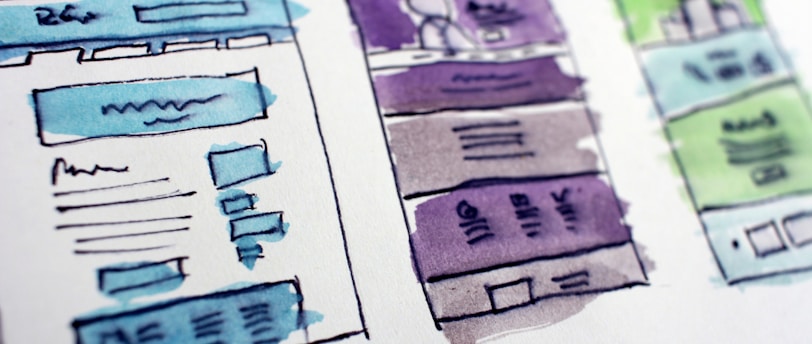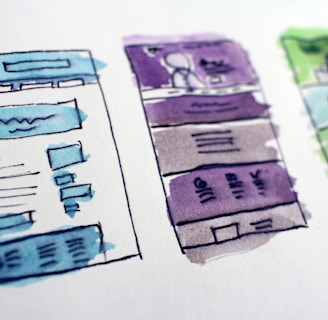Decoding Program Design: Crafting Effective and Impactful Interventions
Program design is more than just blueprinting. It's the meticulous fusion of research, data, and strategic insight. Navigate the sequential steps of crafting a program using our guide, from understanding the core problem to evaluating outcomes.
PROGRAM DESIGN & EVALUATIONSOCIO-BEHAVIORAL RESEARCH


Decoding Program Design: Crafting Effective and Impactful Initiatives
In public health, project management, and organizational development, among other fields, 'program design' emerges as one of the most critical yet often less well-understood concepts. It might sound like a straightforward blueprinting task to many, but that's far from the truth.
Program design is a meticulously layered process guided by research, data, and strategic thinking. Let's delve into the heart of program design, exploring its nuances and best practices.
What is Program Design?
1. Needs Assessment:
At its core, program design is the process of systematically planning and organizing the elements of a program to achieve a specific outcome. Program design encompasses understanding & articulating the problem, gathering relevant data and information sources, aligning with organizational goals, and finally, laying out a roadmap that ensures effective implementation and measurable results.
Let's dissect the sequential steps involved in designing a program. Keep in mind these are high-level process descriptions that do not go into the nitty gritty concerned with achieving each step:
The Program Design Process


This is the foundational phase. A needs assessment is all about understanding the problem or gap you aim to address. This involves:
Conducting surveys or interviews to grasp the challenges from a firsthand qualitative perspective
Analyzing existing data, science, and reviewing literature to understand the broader context.
Identifying stakeholders and understanding their needs and expectations.
2. Defining Objectives:
Once the need is clear, the next step is to set clear, measurable, and achievable objectives. These goals and objectives should be specific, as in SMART goals (Specific, Measurable, Achievable, Relevant, and Time-Bound), indicating what the program will achieve and within what timeframe.
The beauty of program design lies in its ability to draw from established theories to help form a robust hypothesis of your program's impact (or to help explain it retroactively). Whether it's behavioral, social, or organizational theories, they also provide a scaffold for the program, grounding measures in strongly supported principles.
For instance, if a program aims to change smoking behavior, theories like the 'Theory of Planned Behavior' (TPB) can be insightful. TPB examines the influence of individual attitudes, perceived behavioral control, and subjective norms on intervention outcomes.
You can then borrow from these concepts to inform how you nest or categorize variables, whether in the program design (e.g., logic model), or in how you design your impact metrics (e.g., measure domains & categories).
3. Theoretical Framework:
A Side Note on Theory, Funding, and Sustainability
We cover other theories in greater depth here. Though not necessary, a theory can help create a framework that provides a structured lens through which you can communicate your concepts and organize your measures.
As you build the knowledge base and historical record around your program, from its design to its operation to short- and long-term outcomes, it's critical to think of replicability and scalability.
A theory is, by definition, meant to be generalizable. Thus, interventions or programs built on theories are more likely replicable and scalable as they are rooted in generalized understandings of individual behavior and social systems.
The more your methods, theory, and approach connect, the more likely others can do it too. In the world of funding, this can significantly influence how funders view you as they want to ensure the sustainability and broader applicability of their impact investments.
4. Designing Interventions:
With a clear theoretical backdrop and solid research data, the next phase is crafting interventions. These are the actual activities or tools that the program will employ to achieve its objectives. It could be workshops, training sessions, campaigns, or any other intervention delivery mode suited to the program's goals.
At this stage, it would help to have a proposal, logic model, work plan, and budget handy to pitch your program.
Remember that interventions can be designed and employed at multiple levels, including the individual, interpersonal, community, systems, or societal. This makes the menu of intervention options vast!
5. Implementation Planning:
Even the most well-designed interventions falter without a clear implementation plan. This involves:
Deciding on the timeline.
Assigning roles and responsibilities.
Setting up monitoring mechanisms to track progress.
Outlining contingency plans in case of unforeseen challenges. As in, know the risks and plan well for them.


6. Evaluation and Feedback:
Post-implementation, evaluating the program's success against its defined objectives is imperative. This involves gathering feedback, analyzing outcomes, and understanding the areas for improvement. Tools like surveys, feedback forms, or direct observations can be handy.
7. Iterative Refinement:
No program design is perfect from the get-go. It's an iterative process where each cycle of feedback and evaluation contributes to refining the program, making it more effective and relevant.
The Power of Robust Program Design


Program design, backed by solid research and theoretical grounding, can transform ideas into tangible outcomes. A well-designed program resonates with its target audience, optimizes resources, understands the nuanced context, and consistently delivers measurable results.
In sum, program design is like a symphony of art and science. It's where creativity meets logic, theories meld with practical insights, and visions of impact and social change translate into actionable plans. For any organization or individual venturing into crafting a program, understanding the intricacies of design is the key to unlocking success.


